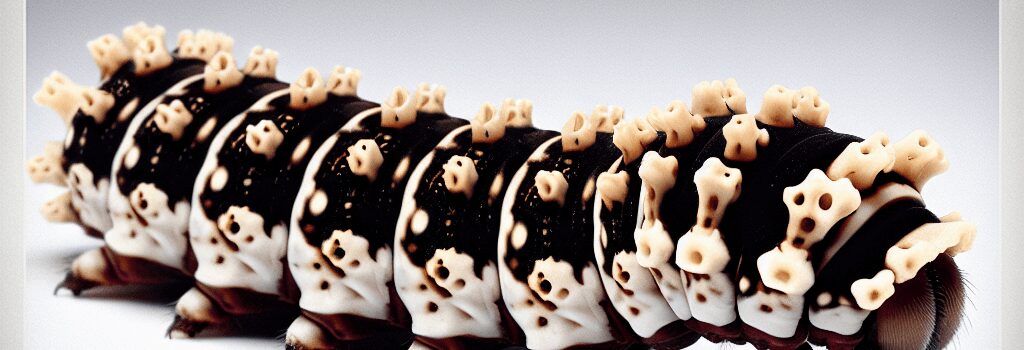Bone-Collector Caterpillar: Insect Armor Expert

Overview of Decorator Behavior
Some species of caterpillars in the family Psychidae—commonly called bagworms—have evolved a striking defense mechanism: they literally collect and wear the remains of other insects. Dubbed “bone-collector caterpillars” by entomologists, these larvae meticulously harvest exoskeletal fragments, wings, and antennae from dead arthropods and affix them to their own silk cases. Far from being random assemblages, the coverings are carefully tailored, with the caterpillars nibbling away excess material to ensure each piece fits snugly.
Mechanics of Material Harvesting
- Silk Case Construction: The larva spins a tubular case composed of highly tensile silk fibers. Each fiber has a silk fibroin core and a sericin coating, granting both flexibility and strength. Average tensile strength measures 0.5–1.0 GPa, on par with some spider silks.
- Material Selection: The caterpillar employs chemosensory setae on its prothoracic segments to detect chitinous fragments rich in antifungal compounds, choosing parts that maximize camouflage and antimicrobial protection.
- Nibbling Process: Specialized mandibles mill the fragments with micrometer-scale precision. High-resolution micro-CT scans show serrated edges on mandibles that grind down wings and leg segments to within 50–100 microns of the case surface, optimizing hydrodynamics and load distribution.
Evolutionary Drivers of Decorator Behavior
Decorator behavior has independently emerged in multiple arthropod lineages, including decorator crabs (Majidae) and certain leaf-footed bugs (Acanthosomatidae). In caterpillars, phylogenetic analyses suggest this tactic arose around 75 million years ago. Dr. Jane Mitchell, a behavioral ecologist at the University of Kyoto, notes: “By co-opting the remains of other insects, these larvae exploit ambient chemical defenses and achieve near-invisible camouflage—an evolutionary shortcut compared to developing endogenous toxins.”
Biomimetic Applications in Robotics
Researchers in the field of soft robotics are taking note. A team at MIT’s Biomimetic Robotics Lab recently developed a prototype “Adaptive Armor Drone” that mimics the caterpillar’s technique, picking up debris with electrostatic pads and sculpting it via onboard micro-cutters. Chief engineer Dr. Leila Chen explains, “This living model informs the next generation of modular robots capable of reconfiguring their exteriors in response to threats or terrain conditions.”
Materials Science Insights
The composite armor of these caterpillars offers intriguing lessons for advanced materials engineering. By layering chitinous fragments with silk-based adhesives, the natural structure achieves impact resistance and self-healing capabilities. A collaboration between the Max Planck Institute for Polymer Research and Harvard’s Wyss Institute is currently experimenting with chitosan-infused hydrogels that parallel the caterpillar’s silk-sericin matrix, aiming for lightweight, biodegradable protective coatings.
Expert Opinions on Ecological Impact
Entomologist Dr. Ricardo Alves of São Paulo State University highlights the species’ role in nutrient cycling: “By scavenging insect corpses, these caterpillars expedite the decomposition process, releasing nitrogenous compounds back into the soil. It’s a small but vital contribution to microhabitat health.” However, Alves cautions that habitat loss and pesticide use may threaten these specialized feeders, potentially disrupting local detritivore networks.
Future Research Directions
- Genomic profiling to identify silk-production genes associated with case-building.
- Ecotoxicology studies on how pollutants affect chemo-recognition of chitin fragments.
- Field trials assessing the efficacy of biomimetic drones in search-and-rescue missions.
While new field observations are still emerging, the bone-collector caterpillar continues to fascinate both biologists and engineers, providing a living blueprint for adaptive camouflage and modular armor systems.